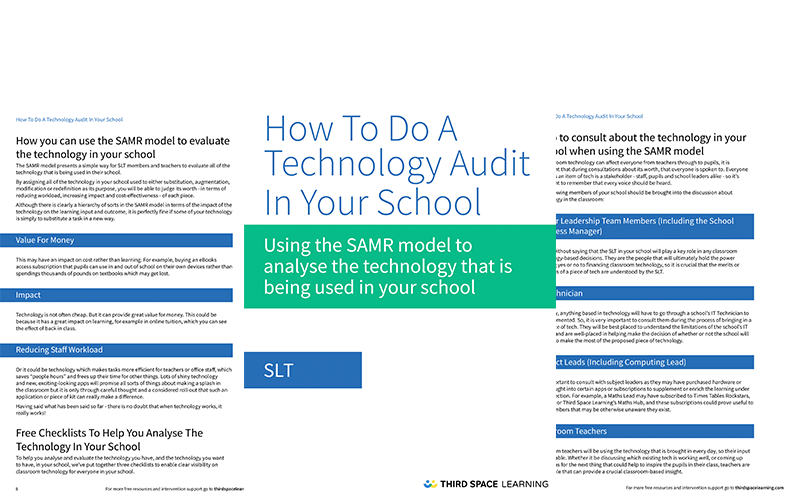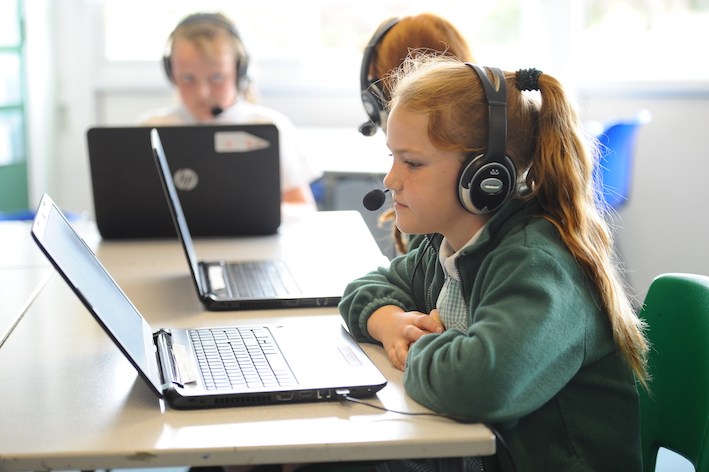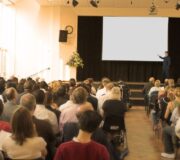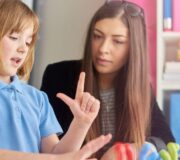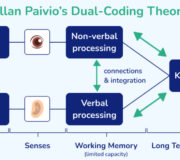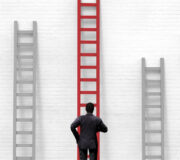Using The SAMR Method To Do A School Technology Audit & Make Technology Work For You In Your Maths Lessons
The experience of integrating technology in the maths classroom is different for every teacher, but one thing that has become clear over recent years is that it is here to stay. In this blog, Edtech expert @jodieworld breaks down how you can use the SAMR approach to do a school technology audit that’ll take your technology in the maths classroom to the next level!
Educational technology (edtech) is ever-evolving. Every year, there seems to be a new “in thing” that everyone talks about. It was interactive whiteboards for a while. They are still around, of course, but are no longer the new kid on the block! Then learning platforms (or VLEs) came to stay for a while and were implemented across schools with a range of success.
Then came iPads and other devices to make learning more portable and to save teachers traipsing classes down to the dusty and overheated ICT suite. Lately we hear about all sorts of AI in the classroom and VR equipment. You may recognise any of the above and still in your classrooms, or you may never have got your hands on any at all. It makes no difference really, until it is used really well and with a purpose.
So How Do You Ensure That Tech Has A Purpose?
You may have already seen the SAMR model used and discussed as a means to decide on, and assess, the using and integrating technology in the classroom. This works on principle that technology can be used for any of the following four purposes:
- Substitution – This means using technology to perform the same task but with computers completing part or all of the task, rather than it being done manually.
- Augmentation – This means using technology to perform a task more efficiently or effectively.
- Modification –This means that using technology allows for a change in the task itself or the output.
- Redefinition –This is when technology allows for a completely new task to be conceived or for the ways we work to be reinvented.
Although there is clearly a hierarchy of sorts in the SAMR model in terms of the impact of the technology on the learning input and outcome, it is perfectly okay if some of your technology is simply used to update a task and bring it into the 21st century.
For example, a new piece of technology may have an impact on cost rather than learning, i.e. buying eBooks access that pupils can use in and out of school on their own devices rather than spending thousands of pounds on textbooks which may get lost.
How To Do A Technology Audit In Your School
Download our free classroom technology audit checklists and find out more about the technology that is being used in your school!
The Technology That Has Helped In My Classroom
The different types of technology available for the classroom range in price and versatility.
There are of course pieces of hardware that are needed in every classroom including:
• Tablets
• Laptops
• Desktop computers
• Microphones
• Interactive whiteboards
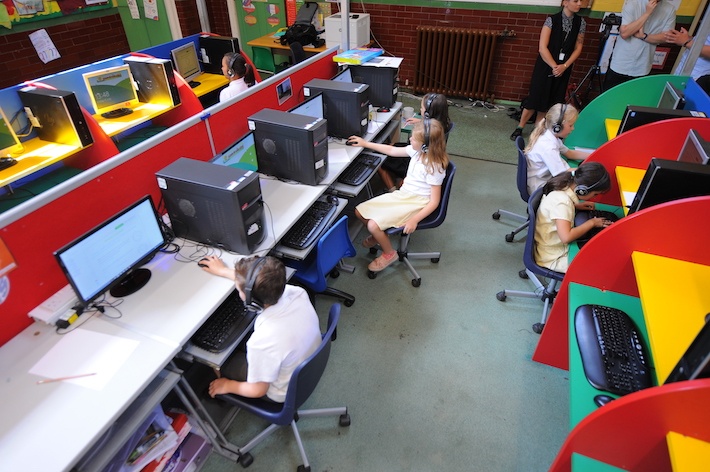
And there are pieces of software that are used to accompany and facilitate the hardware discussed above. They include:
• Apps
• Learning platforms
• Online games
• Quiz tools
• Documentary libraries
Regardless of the type of technology being discussed, we need to be clear on the benefits available from each item and the relationship between them. Whether that is for the whole school, a group, staff, or individual pupils.
To help demonstrate the impact carefully selected technology can have in the maths classroom, I would like to take this chance to share some of the technology that has made a difference in my class.
Many of the technology needs I discuss will be things you already have in school but you may not have thought of using in maths lessons. Some may need more thought and investment, but hopefully all will show you that educational technology definitely has its place in maths!

Meet Skye, the voice-based AI tutor making maths success possible for every student.
Built by teachers and maths experts, Skye uses the same pedagogy, curriculum and lesson structure as our traditional tutoring.
But, with more flexibility and a lower cost, schools can scale online maths tutoring to support every student who needs it.
Watch Skye in actionThe 5 Pieces Of Technology I Use In the Maths Classroom
Classroom Technology Item 1: Podcasting
Although many of you will have heard of podcasting, you may think of them simply as those useful and informative radio-type shows you can access any time to listen to on the drive to work or at the gym. Third Space Learning even have a list of the best UK teaching podcasts here!
But, what if I told you that podcasts are a fantastic tech tool for the classroom?
Some of you may have already discovered the power of podcasting in the primary classroom, using them to make your own radio jingles whilst studying persuasive writing, or for retelling stories. However other people may not have.
The possibilities for podcasts are endless, but at this point in time not many teachers use podcasting in maths. I love to though as it is a great “extra challenge” layer and can be the perfect way to mix up a plenary!
How Can You Integrate Podcast Technology Into The Maths Classroom?
A simple way to integrate podcasting into the classroom is to present pupils with a calculation to do based on the lesson, and then to have them explain it whilst recording with whatever microphone you have available. This could be a microphone attached to the computer or laptop, or a handheld microphone or dictaphone such as a TTS Easi-Speak microphone.
Usually if they come to the whiteboard to explain their work they can be a bit “fuzzy” so long as they are showing the right things, and we can miss some misconceptions such as “carrying” when doing column addition.
However, if explaining it for a podcast (I sometimes add that this would be how to explain maths to a blind person) then they need to really clearly explain each column and what they are doing. It might catch them off guard the first few times, but they catch on fast and it helps you to ensure they are really secure in the maths.
The added bonus is that these podcasts can then be made available on your learning platform or through a free podcast channel (if you currently have no podcast channel try Podbean) and this means that you are also able to build up a bank of revision resources for all students.
How Podcasting Fits In With The SAMR Model
Podcasting is a great example of technology use for Modification of the traditional output i.e. writing in books. This is a simple yet effective way to bring technology into the maths classroom, and definitely something worth considering during your school technology audit.
How Third Space Learning’s Education Technology Seamlessly Integrates Into The Maths Classroom
Here at TSL, we pride ourselves on having a 1-to-1 maths intervention programme that can fit well into any school. All you need for your pupils to enjoy a Third Space Learning session is a computer/ laptop, a headset and a pupil that wants to boost their confidence in maths. We understand that during a school technology audit that you will be keeping a firm focus on things that will have an impact, so we can proudly say that we have helped over 45,000 pupils improve their maths skills with our 1-to-1 platform.
To find out more about how you can use TSL for a redefinition of teaching, book your no commitment 10 minute demo to discover the impact our 1-to-1 interventions can have for your pupils – it’s never been easier or more affordable. Call us on 0203 771 0095 or contact us here to learn more about how we can help turbocharge maths in your school!
Classroom Technology Item 2: Quizzing Tools
Quizzes are a great way to encourage engagement and interaction in your classroom, and fortunately there are lots of ways to set up a quiz online.
You may have a learning platform with a quiz or test tool built in, or you may use Google for Education which has google forms which can be easily used.
There are also a whole host of apps you can use if you have tablets or other devices for use in class quickly and easily.
Technology has made classroom quizzes a pain-free experience for teachers, and a fun and enjoyable one for pupils, and they are a fantastic way to revise a maths topic.
How Can You Integrate Quizzing Tools Into The Maths Classroom?
The great thing about quizzes is their ability to be adaptable to every situation.
A quiz can be as long or as short, simple or testing, or as informal or formal, as you wish.
To many of you the quiz is already a no-brainer.
Why?
Because, in maths especially, it saves so much time on marking.
You could have a short quiz as part of a lesson with just 2 or 3 questions, and show the results on the board immediately to gauge where pupils are at, which may lead to a change in direction for the rest of the lesson.
This of course raises questions of its own:
Why move on if most children aren’t ready?
Or why hold them back if they have all got it already?
Anonymous diagnostics are the answer though, and they can really help with this and make assessment feed straight back into teaching and learning – as it should be!
Longer Tests Can Help With Longer Term Planning
You could invest time, too, in building longer tests to be set at timed slots in lessons or out.
These may form part of a more summative assessment piece at the end of a term, or even the end of each topic.
These would then inform future planning, and although making the test can take as much time as creating and photocopying loads of copies, the automatic marking made possible with technology saves you then taking those tests home, leaving them in the boot of the car all weekend, then panic marking before planning next week’s lessons on Sunday night. (Don’t worry – we have all done it!)
If you are thinking “yeah yeah we all do tests at my school” please ask around your colleagues, and help any that may not have discovered the benefits of quizzes yet to try them out. It is one of the quickest wins you can get in terms of rolling out technology across the school.
How Quizzes Tools Fit In With The SAMR Model
Quizzing tools are a perfect example of Augmentation – making a task more efficient and easy for teachers (something that will get a lot of brownie points in a school technology audit!)
Classroom Technology Item 3: Graphing websites
This is a quick example for a specific lesson.
Graph websites such as this one are great for exploring different types of graphs with pupils.
This can help them to understand which type of graph to use for which type of data, and to make the correlation between what the values are and how we show that when drawing a graph.
How Can You Integrate Graphing Websites In The Maths Classroom?
The first thing to do would be to ask pupils to measure a number of things, and examples could include:
• Wind speed
• Air temperature
• Noise levels
• Ground temperature
• Light levels
They would do this with a data logger, but if you don’t have the right equipment, you can provide them with the information.
You can also ask them to go round the class making tally charts of information such as asking shoe sizes or favourite ice cream flavours.
Then ask them to go to one of the graphing websites and try out the different sets of information in different graphs.
Which ones work best for which kind of information?
Were you missing any information that was needed?
Another benefit to graphing websites is that pupils will also quickly learn the vocabulary needed such as x axis and legend as they need to input these.
How Graphing Websites Fit In With The SAMR Model
The graphing website is a good example of Augmentation as it is such an efficient way to make a graph so allows you to focus more on the “whys” and “hows” rather than the practical skill of drawing the graph. Bear in mind though that you will need to make sure you bring that skill in during other lessons where you want to focus on that side of the process.
Graphing websites may seem like a simple classroom activity, but they are a great way to bring some technology into the maths classroom.
Classroom Technology Item 4: Collaboration
There are lots of ways to use technology for collaboration and it doesn’t really matter how you do it.
If you have a learning platform across the school or Google Apps for Education/Office 365 then you will have tools you can use to collaborate live.
For example, online whiteboards with chat facility or any screen-sharing tools such as Facetime or Google Hangouts can help to facilitate lessons online, with students helping each other out of school hours.
Another way collaboration can be used is to help teachers to run revision sessions without everyone having to come to the school physically – perfect for snow days, holiday top up sessions and for individual pupils who are not able to get to school for any reason.
Once again, the possibilities here are endless!
How Can You Bring Collaboration Into The Maths Classroom?
There are so many ways to use collaboration it is hard to give a good “How?” here, but I will share some of the best examples I have seen.
In some secondary schools older pupils set up online sharing sessions on Friday evenings to ensure younger pupils and peers can get help with any problems they have for homework.
These are all moderated by the older pupils so the teachers do not need to do any extra work (which I think we can all agree is a fantastic thing)!
For a non-live example of collaboration I have seen primary schools where pupils make maths pages in Google Docs and then share them with peers who can add their own comments. These become live note taking documents and they can be working on them during a lesson, then using them to refer back to for homework.
How Collaboration Fits In With The SAMR Model
Collaboration online could be classed simply as Substitution, i.e. replacing in-person meetings, but as you can see in the examples above there are plenty of opportunities for Redefining how things are done and coming up with whole new ways of working.
How To Do A Technology Audit In Your School
Download our free classroom technology audit checklists and find out more about the technology that is being used in your school!
Download Free Now!Classroom Technology Item 5: Online Tuition
In an ideal world where budgets are overflowing, we would all love to have extra specialist teachers floating around school ready to zoom in and take pupils off for intense, personalised, interventions in maths as needed.
It is in this same imaginary and ideal world where interventions run smoothly, with no added pressure on the teacher to create yet more lesson plans and resources, and pupils come back to class with wonderfully secure maths ready to move on with the rest of their peers.
Well, unfortunately, budgets and time tend to restrict such mathematical utopia.
However online tuition and AI tutoring, such as with Third Space Learning, can be the absolute next best thing – and is much more cost effective!
Read more: Best online tutoring websites
How Can You Integrate Online Tuition In The Maths Classroom?
Third Space Learning’s AI maths tutoring with Skye utilises advanced systems, including a diagnostic assessment, to provide high-quality online tuition built by specialist maths experts. This means that all your school needs to enjoy the benefits these interventions bring is a computer with a headset and an internet connection. This allows your pupils to have the extra maths tuition they need.
Lessons are tailored to the child’s needs, starting with a diagnostic “Skill Check In” to identify learning gaps. The development of a personal connection is fostered by Skye’s conversational, voice-based approach via the interactive platform, which keeps pupils engaged and on track.
AI maths tutoring is a perfect solution for utilising Pupil Premium funding to target specific pupils who need support. If you currently send pupils out with a Teaching Assistant for intervention but find it hard to ensure the relevant subject knowledge and high-impact lesson plans are in place, online tuition, including AI tutoring, is the perfect solution. It can help both you and your pupils by providing consistent, teacher-designed content without adding to staff workload.
How Online Tuition Fits In With The SAMR Model
Online tuition is a great example of technology being used for a total Redefinition of teaching and how students can access quality teaching in schools, whilst the actual lesson itself is a Substitution for having a teacher right there in the room with the pupils.
Further Examples Of How You Can Adapt Everyday School Tasks With SAMR
Whilst it is obvious from the information above that the SAMR method has its uses in schools, it can be difficult to understand what it can do for you personally without seeing a couple of everyday tasks broken down.
The following are two tasks that take place almost every day in schools.
Everyday Non-Tech Task 1: Lesson And Long-Term Planning On Paper
It may seem like planning lessons need to be something that is done with pen and paper, but that isn’t necessarily true. This is how it can be broken down and improved by tech with the SAMR approach, which is something worth considering when you do a school technology audit.
Substitution
• Typing plans instead of writing on paper
• Typing notes into online mind-mapping tools
• Recording voice notes or planning to a dictaphone
Augmentation
• Add links to lesson resources and websites into plans for ease of use
• Add images
• Find plans by others on sharing sites to adapt and edit
• Find multimedia such as sounds and videos for lessons
• Search social media hashtags such as #teamenglish and #mfltwitterati for lesson ideas
Modification
• Share lessons online within school to build a bank of lessons that anyone can use in future years
• Add lesson plans to the school website so that parents can view them
• Share plans on social media to get feedback and other ideas
• Allow constant editing and revision of online versions of plans through Gsuite or Office 365 or your learning platform – showing edit revisions and using these for coaching and CPD
• Moderate work through sharing online and build up an evidence bank to inform assessment
• Use online tools and quizzes during and after lessons to get quick feedback from students which will feed into lesson planning
Redefinition
• Use a specially designed template on a learning platform or through shared services, allowing collaboration within school and with input from linked schools anywhere in the world
• Lead team planning sessions via Skype/Facetime rather than in person to enhance work life balance where appropriate
• Run training sessions online and/or incorporate online training into CPD to enhance lesson planning skills
• Create teaching videos and/or interactive resources for students to use before the lesson (flipped learning) or as homework (revision and consolidation)
Everyday Non-Tech Task 2: Writing A Task In Books
One of the most basic elements of school life, but it can certainly be assisted and improved by technology.
Substitution
• Writing on the computer/tablet instead of on paper
• Making notes on a platform such as Google/O365
• Drawing up graphs or diagrams on the computer using appropriate software/apps
Augmentation
• Adding images to the story found online or using paint packages
• Adding links to external content
• Using mind-mapping software to create plans
• Add videos embedded into the writing
• Use a presentation tool such as PowerPoint instead of Word to allow for adding animations or transitions to the piece
• Use websites/apps to aid with creation of multimedia content
• Use highlighting on documents to add notes and for marking
Modification
• Writing on a blog and sharing to receive comments
• Sharing notes written on Google/O365 with the class and allowing collaborative modification
• Building the work as a word-based computer game for players to navigate their own way through
• Podcasting the writing and adding to a podcast site
• Making a film instead of writing – using a written script and teleprompting apps on the tablet
Redefinition
• Having a webinar with an expert on the subject or asking them questions via email/social media
• Sharing writing with an expert through online means live to let them contribute directly to the writing during the lesson
• Making a shared video or podcast via social media adding in content from contributors anywhere in the world
• Shared writing through online tools such as Skype/Facetime and/or learning platform webinars
• Online tuition and lessons for those unable to work in class or for extra tuition leading to work produced on a platform during the online tutoring
There are of course a host of other ways you can incorporate educational technology into the maths classroom after a school technology audit. Let us know what you are doing with technology and maths in your classrooms and download our free SAMR guide to picking and using technology if you want to take a critical step back and see if you are using all the benefits that technology can provide to your school!
—
If you are looking for further help with technology in the maths classroom, or any other element of KS2 maths in your school, take a look at our how our 1-to-1 interventions can make a difference for your target pupils.
—
Further Reading:
DO YOU HAVE STUDENTS WHO NEED MORE SUPPORT IN MATHS?
Skye – our AI maths tutor built by teachers – gives students personalised one-to-one lessons that address learning gaps and build confidence.
Since 2013 we’ve taught over 2 million hours of maths lessons to more than 170,000 students to help them become fluent, able mathematicians.
Explore our AI maths tutoring or find out about maths intervention programmes for your school.



